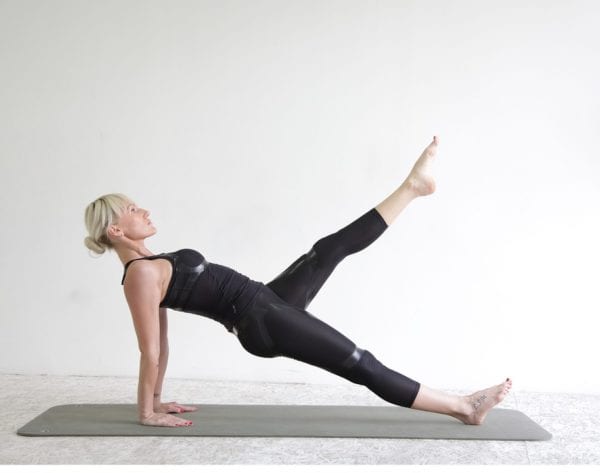Pilates is a fantastic way to build your personal strength, endurance, and flexibility. Of course, all that work is bound to make your muscles a little sore. Every time you try a new stretch or Pilates exercise, your muscles pull and strain themselves right to the limit and then need to build new, stronger muscle tissue for the next round.
Pilates Soreness for Beginners and Experts Alike
Pilates stretches every possible muscle by helping you reach and then top your maximum capabilities. Unlike typical exercise sports, Pilates helps you target specific muscles and focuses on stretching and strength. It is important to understand that you are seriously challenging your muscles and sometimes even tearing them a little on purpose so that they can grow back longer, stronger, and more toned than before.
Pilates Soreness for Beginners and Restarters
For beginners just starting Pilates or those returning from a long break, it should come as no surprise that your muscles are sore from being challenged and reformed in this way. Pilates works out muscles you may have never activated before, and don’t get worked out during regular activity so they’re bound to complain a little when you start to target and tone.
Pilates Soreness for Experts and Boundary-Pushers
Soreness can happen even for experienced Pilates experts! In fact, soreness is a good sign that you are continuing to find your limits and improve the upper-end capabilities of your muscles.
Of course, no one wants to actually walk around with sore muscles, even if it’s a sign that the Pilates exercises are effective. Below are the six best recovery tools and techniques to soothe sore muscles and promote strengthening healing.
Six Recovery Techniques for Pilates Muscle Soreness
1) Take a Long Soak in a Hot Bath
Heat relaxes muscles that are sore from stretching and reforming. Heat actually promotes blood flow and softens muscle tissue so that you can relax. A long hot bath is an excellent way to relax every single muscle you worked out with your last few Pilates sessions.
While you’re at it, add a few scoops of Epsom Salt and let the Magnesium do its thing for your sore muscles. A few drops of your favorite essential oil can also help your mind relax your muscles intentionally so that you can gain the full benefit of your long hot soak.
2) Remember to Warm Up and Stay Limber
It’s tempting to lie around or hold still when you feel sore. But too much holding still can cause your new muscle tissue to grow in short rather than stretched out and ready for another round of Pilates. Don’t let yourself “stiffen up” as you recover. Take the time every day to do a round of warm-up stretches even if you’re on a day off from a full Pilates workout. Warmup stretches while your muscles recover will make sure that the new tissue grows back strong, flexible, and ready to go.
When you do return to Pilates, remember to do a few simple warm-up stretches and exercises to get your blood flowing. Warm muscles are more flexible and are less likely to tear as you stretch and build strength.
3) Fuel Your Body for Healing with Water and Protein
Your body needs water both to build the new muscle tissue and to fuel all that exercise. Pilates encourages your muscles to grow new, stronger, denser muscle tissue that will increase your tone and physical strength. In order to accomplish this, your body needs fuel to build that muscle tissue. That’s why you crave serious protein after a Pilates session, sometimes for days afterward. Your body also needs water both to build the new muscle tissue and to fuel all that exercise.
Keep your body well-fueled for recovery by drinking plenty of water and upping your protein intake while you are pushing your muscles to their limits and beyond.
4) Ease Inflammation with Cold Showers and Ice Packs
If your muscles feel hot and tender in addition to being sore, this is a sign that you may have pushed a little too far and are experiencing recovery inflammation. The best way to deal with inflammation and ease the tender soreness it brings is with cold.
Many Pilates practitioners have discovered that cold showers, or alternating between hot and cold in the shower, is both soothing and effective for between-workout recovery. If you have a specific muscle that feels inflamed and sore, wrap an ice pack from the freezer in a towel and chill that sore spot for up to 30 minutes out of every 2 hours. This will bring down the swelling and let your muscle get back to healing normally.
5) Lie on a Hot Water Bottle for Targeted Soothing
Do you have a particularly sore muscle that isn’t tender, just achy as all-get-out? A hot water bottle may just become your new best friend. Hot water bottles are a fantastic tool for any exercise enthusiast because they are a pillow-like way to apply heat directly to any sore spot you manage to inspire with a serious workout. Hold the water bottle to your muscle or find a clever way to lay your muscle easily over the hot water bottle while you focus on other things.
6) Get Plenty of Sleep, and Remember to Stretch
Don’t forget to sleep! When you feel sore is a good time to schedule yourself an extra hour or two of shut-eye to let your body relax and recuperate. There are special maintenance procedures your body goes through every time you go to sleep.
Those extra hours in bed are great for helping your muscles knit into their new stronger forms. Just remember to do some awesome cat and cow stretches before and after sleep to make sure your muscles build long and flexible instead of short and stiff.
Final Advice: Pay Attention to Signs of Real Injury
If your discomfort feels like something beyond normal muscle soreness, listen to your body. Your body knows the difference between a muscle that is growing stronger after a tough workout and a muscle or ligament that has been torn into a real sprain. Sprains, strains, and twists are common with all forms of athletes and it’s important to take yourself to the doctor if you think something is really amiss with your recovery feelings.
Remember: Soreness, even extreme soreness, is totally normal. But weakness, tenderness to the touch, and significant swelling are signs of an injury that needs medical attention. Don’t neglect yourself by accident. Treat that soreness with hot baths and plenty of water, but make sure to treat any real sprains or strains with the medical care they need.
Finding Pilates in Westwood, California
If you’re looking to get into Pilates or boost your Pilates experience beyond what you can do at home, contact us today! We’re always happy to talk technique, compare muscle soreness tricks, and schedule a new member of our classes at any time! Whether you’re a DIY Pilates master or just looking to check out the fun, we’ll be glad to hear from you.

